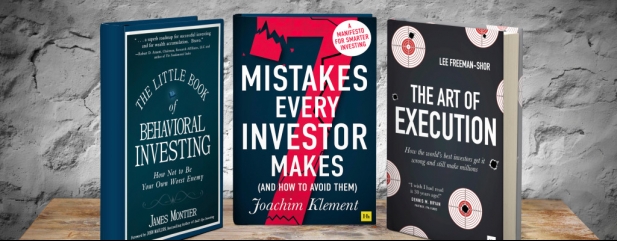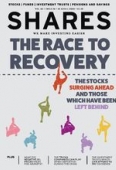Archived article
Please note that tax, investment, pension and ISA rules can change and the information and any views contained in this article may now be inaccurate.
Why you should understand 'behavioural investing'

According to the ‘efficient market theory’, at any given point in time share prices should reflect all the information available to investors and therefore stocks should always trade at their fair value.
If the theory is correct, it should be impossible for investors to buy undervalued stocks or sell overvalued stocks because the market has already priced in all possible scenarios.
However, the efficient market theory is fundamentally flawed because it fails to take into account one very important variable - investors themselves.
AN INVESTOR’S WORST ENEMY
As we know from history, and many of us from our own personal experience, we tend to believe that whatever happened in the recent past is likely to continue into the near future.
If stocks have been rising for several years, we assume they will continue to rise and we keep buying them even when they become overvalued.
When they suddenly fall, which inevitably they do because nothing goes up forever, we suddenly feel a lot less optimistic, and if they keep falling we make the classic mistake of selling at the wrong time.
As the father of value investing Ben Graham put it, ‘the investor’s chief problem - and even his worst enemy - is likely to be himself’.
If all of this sounds painfully familiar it’s because we don’t seem to be able to learn from past mistakes. This is where ‘behavioural investing’ comes in: in theory, studying the mistakes we made in the past should help us avoid making those same mistakes – and others – in future.
THE POCKET GUIDE
The first book in our review is James Montier’s Little Book of Behavioural Investing, part of the same series as Joel Greenblatt‘s Little Book That Beats The Market.
Montier was something of an ‘enfant terrible’ in his days as an investment strategist and was never short of an opinion. Today he is part of the asset allocation team at GMO in Boston, working alongside renowned value investor Jeremy Grantham.
The ‘Little Book’ is full of statistical studies showing how our in-built biases lead us to repeat avoidable mistakes in investing. For example, we tend to think that more information leads to better investment decisions, when in practice just a handful of facts can serve us better.
In the same way that Warren Buffett tries to buy ‘businesses with good-to-superb economics run by honest and able people at sensible prices,’ Montier focuses on three things.
As a value investor his number one concern is valuation: is the stock seriously undervalued? Second, is the balance sheet sound or could it go bust? Third, he looks at capital discipline: what does management do with money investors give them?
He also recommends trying to ‘kill’ your investments, in other words working through every possible scenario which could undermine the investment case.
Looking at potentially negative outcomes helps to avoid ‘confirmation bias’, which is the tendency to only consider opinions or facts which back an existing positive view on a stock.
Montier doesn’t just draw on examples of human bias in investment, he shows that in the fields of law and medicine the way facts are presented can often sway life or death decisions.
He finishes with the importance of accepting our investment mistakes. If we buy a stock and it goes up, we assume it went up for the reasons we identified.
If it goes down however, we attribute it to bad luck or external events and fail to learn from our mistakes.
MISTAKES WE ALL MAKE
This leads us onto our second book, the snappily-titled Seven Mistakes Every Investor Makes by Joachim Klement, head of stock market strategy at investment bank Liberum.
Like Montier, Klement makes good use of academic studies and insights from famous investors to reinforce his arguments. It’s worth adding that he has also run discretionary portfolios for investors so he understands investors’ thinking.
The first mistake we make is to try to forecast company earnings, multiples and so on. We would be better off basing our assumptions on historic data rather than trying to guess the future.
Another mistake is to take a short-term view and let ourselves be swayed by information flow. There are two reasons for this. First, short-term returns are more volatile and are more likely to show a loss. Second, over-trading seriously eats into your returns.
The best approach is to ‘sit there and do nothing’, rather than constantly check on your investments. This is the approach that Terry Smith, founder of Fundsmith, takes: buy good companies and do nothing.
A third mistake is to not consider both sides of a story. This isn’t so much tying to ‘kill’ an investment as weighing up supply and demand for example.
All too often we focus just on the potential demand for a company’s products and we overlook the supply side of the equation.
All in all, Klement is an excellent guide, drawing on his own experience – including his mistakes – together with those of well-known investors to underline his seven points. The book is full of useful suggestions and each chapter has a summary of the main takeaways as well as a list of references for further reading.
THE ‘WOW’ MOMENT
The third book in our review is The Art of Execution by asset manager and allocator Lee Freeman-Shor, which looks at the mistakes professional fund managers make and how to avoid them.
Over seven years, Freeman-Shor allocated an average of $50m to 45 of the world’s top investors with instructions only to invest in their 10 best ideas.
In theory, the plan couldn’t fail because these were the ‘some of the greatest minds at work in the markets today’ says Freeman-Shor.
His ‘wow’ moment came when he analysed each trade and found that most of their investments actually lost him money.
Even more surprising, some of these ‘legendary investors’ were only successful one third of the time. Yet all of them made money, because their winning trades made more than their losers.
WINNERS AND LOSERS
The book looks at how some professional investors handle loss-making trades, including their most common mistakes, and how other investors are able to maximise their returns on both losing and winning trades.
Freeman-Shor categorises the serial loss-makers as ‘Rabbits’, caught in the dilemma of capital impairment. When faced with losses they fail to adapt, neither cutting their positions nor adding to them.
To quote Charles Darwin: ‘It is not the strongest of the species which survive, nor the most intelligent, but the one most responsive to change.’
‘Assassins’, on the other hand, set themselves a time or price limit at the time of investing and are ruthless in killing off losing positions, while ‘Hunters’ stalk their losers and slowly build their positions to capitalise on a rebound. Each has a strict set of rules which does away with emotion.
When it comes to winning trades, the ‘Connoisseur’ strategy of taking small profits along the way generates far better returns than the hit-and-run approach of most investors.
Again, having a strict rule-set, which Freeman-Shor calls ‘The Winner’s Checklist’, is essential in maximising gains.
With dozens of real-life examples of winning and losing trades, in stocks as varied as BAT (BATS), Experian (EXPN), Raymarine, Royal Bank of Scotland (RBS), Shoprite and Spirax-Sarco (SPX), The Art of Execution is engaging, highly readable and most importantly a genuinely valuable book for those looking to become better investors.
Important information:
These articles are provided by Shares magazine which is published by AJ Bell Media, a part of AJ Bell. Shares is not written by AJ Bell.
Shares is provided for your general information and use and is not a personal recommendation to invest. It is not intended to be relied upon by you in making or not making any investment decisions. The investments referred to in these articles will not be suitable for all investors. If in doubt please seek appropriate independent financial advice.
Investors acting on the information in these articles do so at their own risk and AJ Bell Media and its staff do not accept liability for losses suffered by investors as a result of their investment decisions.

 magazine
magazine











